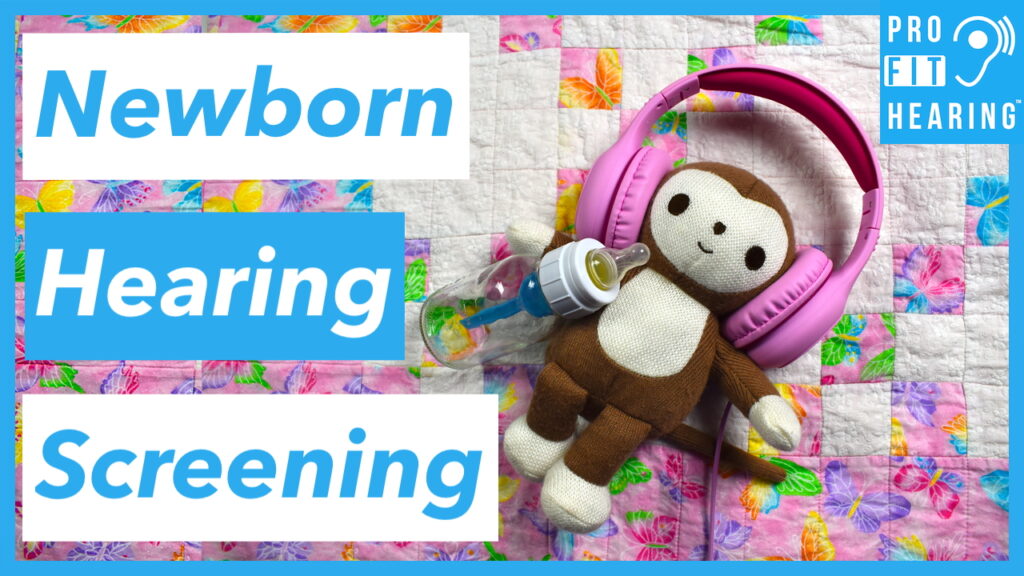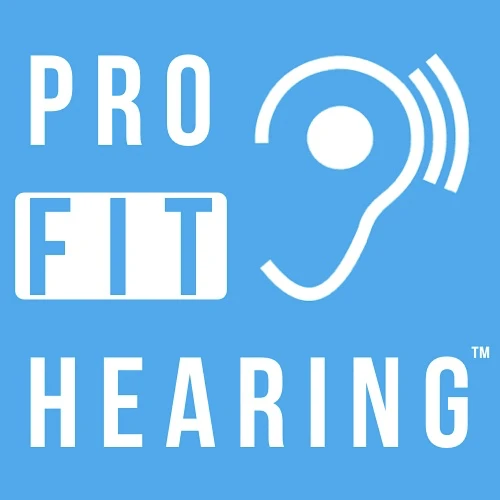Newborn Hearing Screening FAILED?

Newborn Hearing Screening
Did your child fail their newborn hearing screening? In this post, I’ll explain testing, hearing impairment, and possible hearing device technology solutions. Coming up!
SUBSCRIBE to our YouTube channel for weekly videos!
Hi, I’m Dr. Derek – audiologist, audio engineer, and musician with ProFitHearing.com bringing you the best insight in today’s latest hearing aids, headphones, and audio technology to improve your life. If you have concerns about your hearing, always consult with your local physician or audiologist.
If you’re interested in hearing aids, check out my free eBook HERE.
Today, I’m talking about newborn hearing screening and hearing device options. According to the Centers for Disease Control and Prevention (CDC) in a 2017 survey, 1.7 out of 1000 babies screened in the United States were identified with hearing loss.
Newborn Hearing Screening
Newborn hearing screening is completed before a baby leaves the hospital. If a baby fails the hearing screening, the testing is repeated and then additional follow up can be completed by a pediatric audiologist. A failed newborn hearing screening can be a result of middle ear fluid, outer or middle ear abnormalities, or inner ear hearing loss. In some cases, a baby may initially fail their hearing screening only to later pass. This is often the result of middle ear fluid that clears. A hearing screening can also detect inner ear hearing loss also called sensorineural hearing loss which is permanent.
It’s important to identify if a child has hearing loss as soon as possible so that your pediatrician can recommend an appropriate treatment plan. Impaired hearing can significantly impact speech and language development and overall communication. Your pediatric audiologist can make recommendations on whether to proceed with hearing aids or possibly consider cochlear implants. Note however that families of children who are born Deaf may choose to not treat hearing loss and instead pursue sign language for communication. Ultimately, it is the parent’s decision whether or not to treat hearing loss.
Newborn Hearing Screening Tests
There are two types of newborn hearing screening tests that may be used in the hospital. These tests are automated and result in a PASS or FAIL result. Further diagnostic testing is recommended if the child fails the hearing screening.
Otoacoustic Emissions
One hearing screening test is the otoacoustic emission or OAE test. This plays a series of soft sounds into the ear canal and records whether there is a response from the inner ear sensory cells or hair cells. A reduced or absent response will likely result in a failed screening.
Auditory Brainstem Response
Another test is the Auditory Brainstem Response or ABR. It may also be referred to as Brainstem Auditory Evoked Response or BAER. This test uses a small electrode on the head and behind the ears to record brainwave responses to sounds played into the ear canal. If there is a reduced or absent brainwave response to the sound, this will likely result in a failed screening. The ABR can be completed at a screening level, or an audiologist can use this exam to determine the child’s hearing threshold levels. ABR data is used to fit children with hearing aids and also to determine whether a cochlear implant should be considered to treat hearing loss.
Tympanometry
If middle ear fluid is suspected, a test called tympanometry can be completed. This test uses fluctuating air pressure in the ear canal to see if the eardrum moves back and forth normally. If middle ear fluid is present, the eardrum mobility is often reduced. Fluid can prevent sound from passing into the ear normally.
Behavioral Testing
Once the child is older, behavioral testing can be completed in a sound booth by a pediatric audiologist. The audiologist will play sounds from side to side to see if the child responds to sounds with a head turn response or with certain activities like putting a ball in a bucket each time they hear the beeps. Speech discrimination testing can also be completed to see how clearly the child understands words. Behavioral testing as well as the automated testing discussed here all help the audiologist determine the type, configuration, and degree of hearing loss. Your child may need several office visits over time to obtain the more complete picture of their hearing status.
If you have concerns about your child’s hearing, consult with your pediatrician and have an evaluation by a pediatric audiologist. Depending on the nature of the child’s hearing loss, it may be treated by an Ear Nose and Throat physician (ENT doctor), with hearing aids, or with cochlear implants.
Newborn Hearing Screening – Hearing Devices
Hearing Aids
Hearing aids amplify the frequencies of sound that are not audible. They are custom tuned to an individual’s hearing thresholds. Hearing aids provide more volume and speech clarity so that words are easier to understand. Hearing aids give children access to sounds in their environment, aid in their speech and language development, allow for effective communication, and assist in learning and comprehension of the world around them.
Cochlear Implants
In cases of more severe hearing loss, hearing aids may not provide enough benefit so a cochlear implant can be considered. Cochlear implants stimulate the auditory nerve with electrical impulses that the brain interprets as sound. This direct connection to the nerve bypasses the damaged part of the ear and sends the signal up to the brain. A cochlear implant uses an inner electrode device that is inserted into the inner ear as well as a device that sits on the outside of the head or behind the ear.
Bone Anchored Hearing Aid (BAHA)
In the case of conductive hearing loss or single sided deafness, your pediatric audiologist may recommend a Bone anchored hearing aid or BAHA. This is a small device that sits behind the ear and vibrates against the bone. This bone conducted sound transmits through the skull to the inner ear.
A BAHA device can be secured into place with a headband (for children) or with surgical implantation into the bone. This often results in a metal post implanted into the bone or a magnetic implant positioned just under the skin. Bone anchored hearing aids are also used for conductive and mixed hearing loss.
Early Intervention
Your child’s pediatrician can refer you to a pediatric audiologist to guide you in selecting the most appropriate hearing technology for your child’s needs. With any hearing loss, early intervention is key. The earlier the hearing loss is detected and treated, the better the outcome. Also, any hearing technology that’s recommended by your audiologist should be worn every day to aid in your child’s speech and language development.
If you are looking for more information and resources on hearing loss in children, please refer to the following link from the Centers for Disease Control and Prevention or CDC. A Parent’s Guide to Hearing Loss.
What other questions do you have about newborn hearing screening and hearing device options? Let me know in the comments below. If you received value from this post, go to https://www.youtube.com/profithearing and check out all the videos on our YouTube channel.
-Dr. Derek
